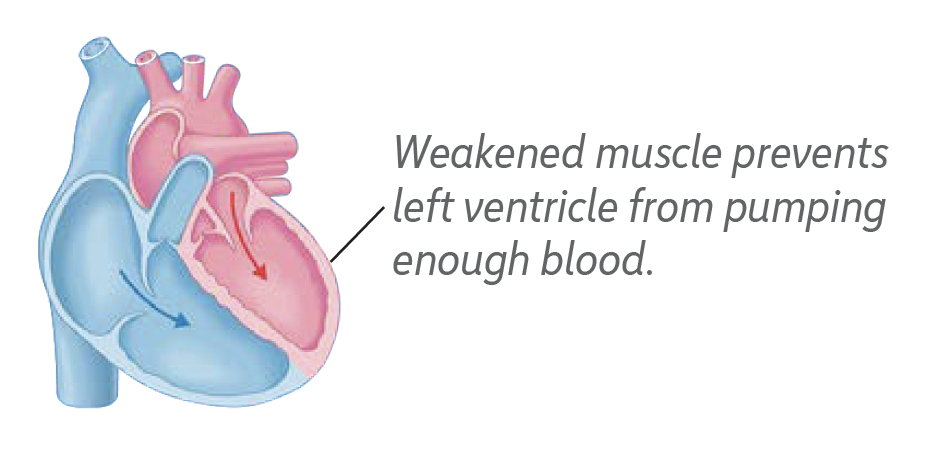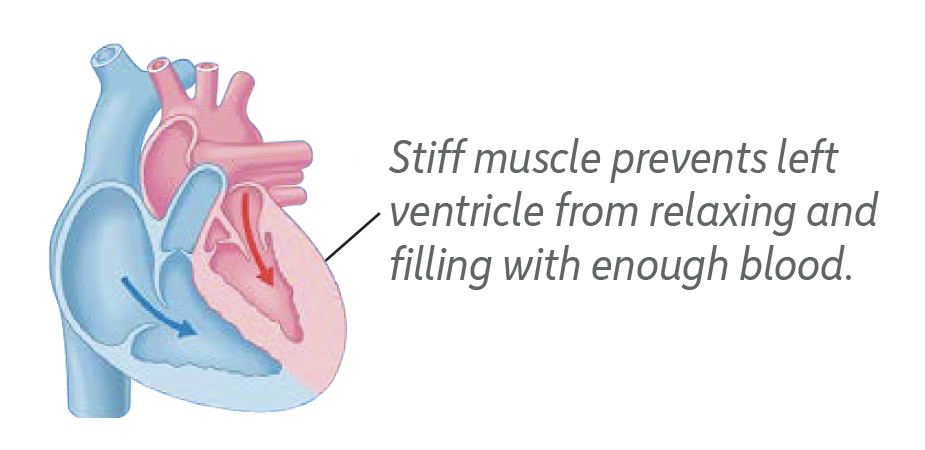Types of Heart Failure
Explore each section to learn more.
Left-sided heart failure
The heart's pumping action moves oxygen-rich blood as it travels from the lungs to the left atrium, then on to the left ventricle, which pumps it to the rest of the body. The left ventricle supplies most of the heart's pumping power, so it's larger than the other chambers and essential for normal function.
In left-sided or left ventricular (LV) heart failure, the left side of the heart must work harder to pump the same amount of blood.
Continue to learn about the two types of left-sided heart failure.

Heart Failure with Reduced Ejection Fraction (HFrEF) (Systolic HF) is a type of heart failure where the heart weakens, preventing the heart from pumping enough blood.

Heart Failure with Preserved Ejection Faction (HFpEF) (Diastolic HF) is a type of heart failure where the heart muscle contracts normally but the ventricles do not relax as they should.
Right-sided heart failure
The heart's pumping action moves "used" blood that returns to the heart through the veins through the right atrium into the right ventricle. The right ventricle then pumps the blood back out of the heart into the lungs to be replenished with oxygen.
Right-sided or right ventricular (RV) heart failure usually occurs as a result of left-sided failure. When the left ventricle fails, increased fluid pressure is, in effect, transferred back through the lungs, ultimately damaging the heart's right side.
Heart failure with congestion
When blood flow out of the heart slows down it can cause the blood returning to the heart to back up. When the blood backs up it causes congestion and swelling in the body's tissues.
Sometimes fluid gathers in the lungs and interferes with breathing. When this happens it causes shortness of breath, especially when a person is lying down. This is called pulmonary edema and if left untreated can cause respiratory distress.
Heart failure also affects the way kidneys work. Heart failure makes it hard for the kidney to get rid of sodium and water which can increase swelling in the body's tissues.


- Slide number 1
- Slide number 2
- Slide number 3
- Slide number 4
- Slide number 5
- Slide number 6


